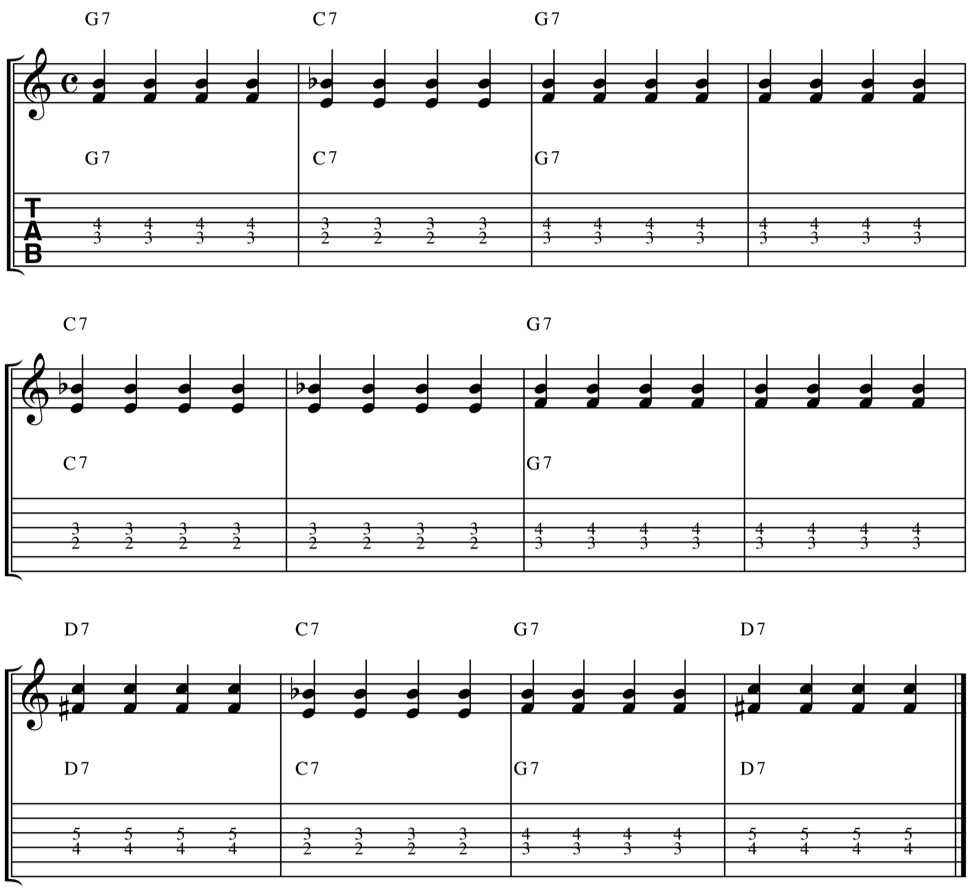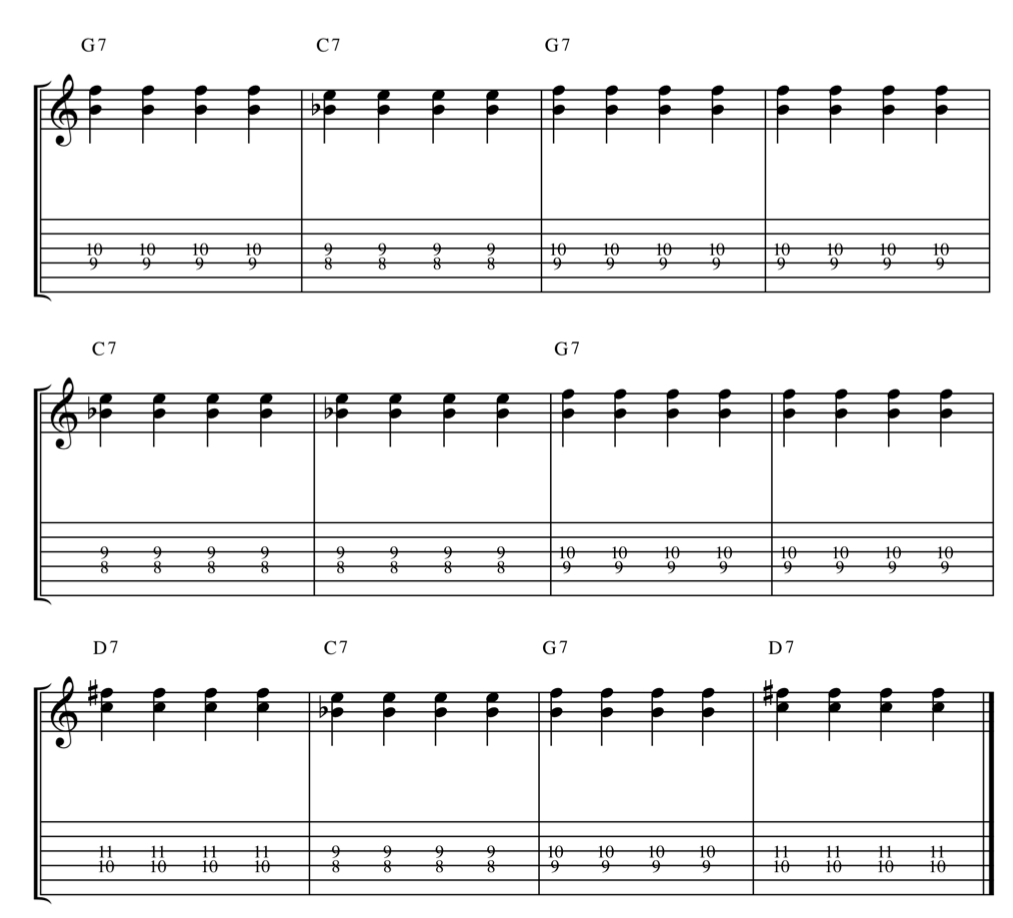What is Comping And What Are Guide Tones?
“Comping” is a term used by jazz musicians.
It is short for “accompanying”.
The term “guide tones” refers to the 3rds and 7ths of chords.
These are the most important notes in a chord.
The 3rd is the note that gives a chord its major or minor chord quality.
The 7th further defines the chord sound as it adds the “spice” to the chord.
If you were to leave the root and 5th out of a chord and only keep the 3rd and 7th, it would still sound like that chord.
The root and the 5th in other words: don’t contribute as much to the overall sound of the chord.
The reason for this is tied to the study of intervals.
The chord’s root has the same sonic character akin to the unison or octave (as described in the study of intervals).
Unisons and octaves are called perfect intervals in the study of harmony.
The 5th is a perfect interval as well.
If one were to describe the sound and character of perfect intervals (unison, 4th, 5th, octave), one would use words like hollow, transparent, colorless, or even descriptions like “lacking personality”.
3rds and 7ths however, have a lot of personality.
3rds sound sweet, pleasant, like honey, also called “consonant”
7ths sound like vinegar, pepper, spicy, also called “dissonant”.
If you are interested to learn more about the theory behind this, I recommend the following blog.
The Harmonic Series and Its Implications on Composition
In case you want to learn more about intervals on guitar, the following blog gives you access to all the URLs explaining intervals in great detail:
The Study of Intervals: The Octave
Comping with 3rds and 7ths.
So to get back on topic: when you comp with guide tones, you are basically playing rhythm guitar only using the 3rds and 7ths of chords.
A couple of traits of this rhythm playing style:
- You get an uncluttered, more open sound.
- You leave more space for the improviser, who has more improvisational freedom soloing over chords that are stripped down to their most basic form.
- You’re not stepping on the bass player’s toes with your roots.
- The parts you play sit better in the overall band mix.
- This comping style leans itself really well to a larger ensemble with lots of musicians.
- It’s easy to voice lead the chords. (“Voice leading” refers to a way of connecting the chords with the least amount of motion between chord tones. This technique makes it sound like you’re composing on the spot, creating a tapestry of connected chords. )
Comping With Guide Tones in Blues
There is a fun way, you can comp with guide tones in blues.
This is a common rhythm technique in larger blues band settings.
Check out the following examples of a major blues with guide tones in the key of G.

Now here’s something fun…
When you move the above fingerings up 6 frets, you get exactly the same notes as in the above example, just flipped around.
So there are 2 locations where you could play this.

Conclusion
Hit me up anytime at vreny@zotzinmusic.com if you have any questions, or if you would like to book a lesson.
These free lessons are cool, but you will never experience the progress, joy, and results that my students experience in lessons when you’re learning by yourself from blogs and videos.
That is why people take lessons: way better results and progress, much more complete information, exposed to way more creative ideas than you can get from a blog or YouTube video.
There is only so much that self-study can accomplish.
If you want to see amazing results and progress in your guitar playing, buy your first lesson here and get started ASAP.
You’ll impress your friends and loved ones in no time with your guitar playing!
Consider donating any small amount to help me keep this blog going.
Thank you for your support!


